|
Batteries
Delcotrons
Heated Windshield
Heavy Duty
Horns
Ignition
Magnequench
MISAR
Missile Battery
Propulsion Systems for Electric Vehicles
Regulators
Shock Absorbers
Starters Switches
Remy Brother Patents
Products
Horns
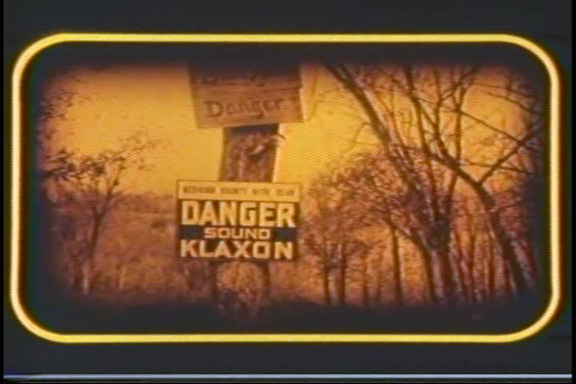
Delco-Remy got into the horn
business in
1924 with the purchase of the Klaxon Horn
Company in Newark, NJ. It had been determined that Remy could build
the horn at a lower cost than Klaxon and the manufacturing equipment was
moved from New York to the third floor of Plant One, where horn
manufacture remained until 1946 when it moved to Plant 7. The
manufacture of horns remained there until it moved to Plant 10 in the
1980's. This was its last location until the product line was sold
in the late 1990's.
When the windows were open during
the summers when the horns were in Plant One (This before the the Plant
was air conditioned and sound booths were used to capture the sound.
Link to 1940 Anderson Library Photo) one could hear the horns being
blown during test within a radius of several blocks of the plant.
Below is a progression of the design evolution of Delco-Remy horns which
were on all GM cars and light duty trucks from 1924 until the late
1990's..
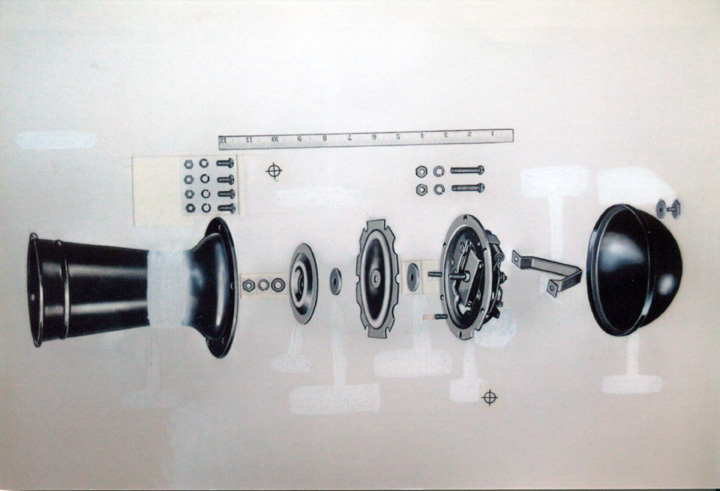
The Klaxon
Horn. A Klaxon type horn uses a motor-driven toothed wheel which
ratchets against a metal stud attached to a diaphragm. Later horns would
remove the motor and have the diaphragm activated by magnetic field
from a coil of magnet wire. Cost of a Klaxon horn was $3.50. Photo courtesy of Ted Vinson / Madison County
Historical Society.
Link to YouTube Delco-Remy KLAXON 8C Ahooga Horn
Link to YouTube Delco
Remy Klaxon 6 Volt Horn Model 8C
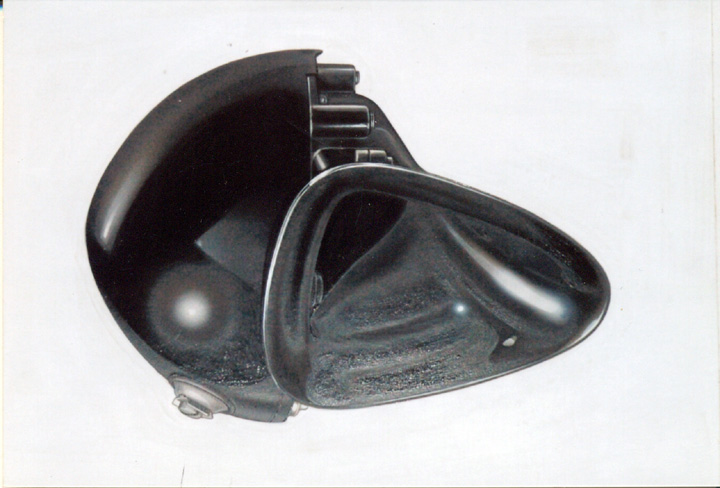
This was known as a Sea Shell Horn and
replaced the Klaxon design. Even after the Klaxon design was
replaced the term "Klaxon" was still used to mean an automotive horn.
Photo courtesy of Ted Vinson / Madison County Historical Society.
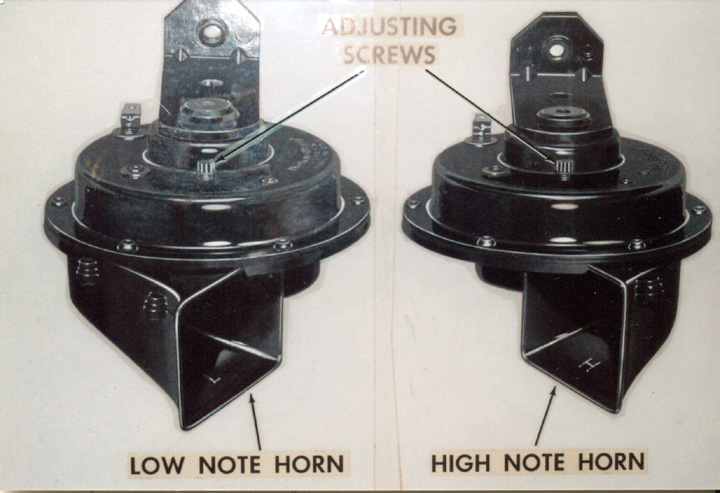
Aluminum Die cast Horns were next in the
series. Later one there were five horn notes that were manufactured. Photo courtesy of Ted
Vinson / Madison County Historical Society.
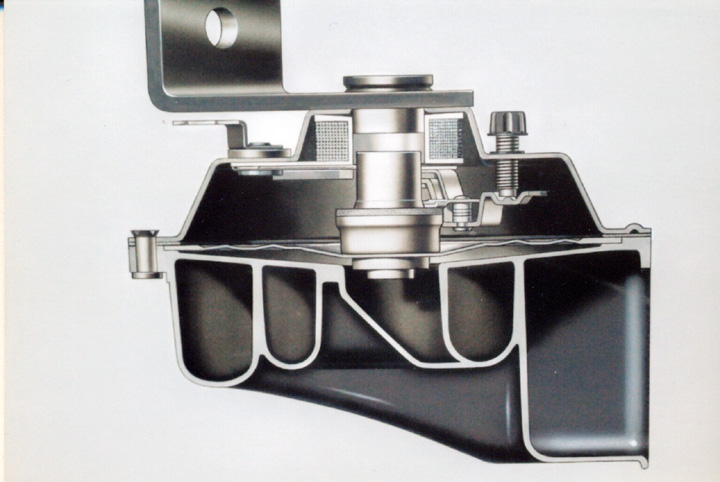
Cross section of a die cast horn. Photo
courtesy of Ted Vinson / Madison County Historical Society.
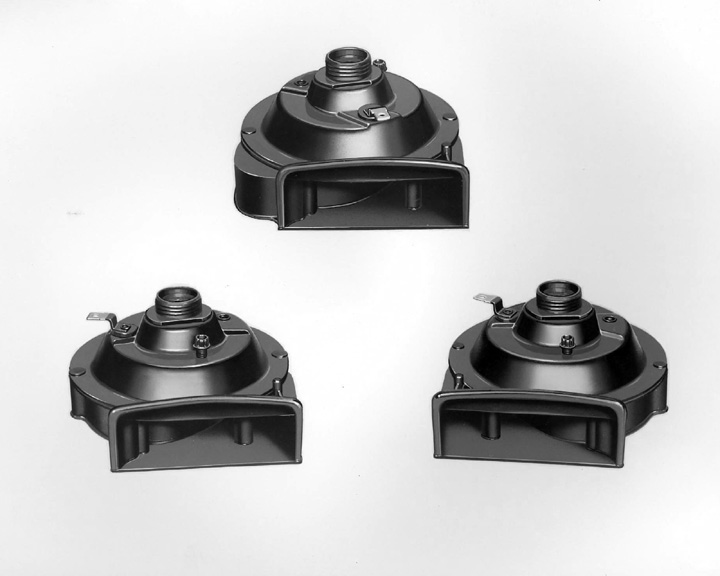
Plastic Horns that were introduced in
1974 and resulted in four new production lines in Plant 7. The
projector was plastic while the back shell and back plate were stamped
steel. Gene Phillips.
While there were only five
notes that horns produced there were literally hundreds of horn brackets
for mounting the horns to vehicle as every GM vehicle had its own unique
location for the horn or horns causing a proliferation of part numbers. Horns
were also typically the last component that were found room for under the
hood during the vehicle design resulting many times with them being placed down
very low in the engine bay. This would increase warranty
claims as water and salt would get into the horn, corrode it and cause it
to fail. If relocated to a higher location the problem would go away
or be reduced. In any location under the hood the horn would
be oriented with the projector opening down to allow for drainage of moisture.
The last series of horns were produced in five
musical notes which could be used individually or in combination to give a
musical chord. Below are 1978 GM horn applications. Note that
GMC or Chevy trucks are not included below although they had DR horns also. The Alarm Tone produced a piercing sound
as part of the Corvette Anti-Theft System.
| Lo-Tone "F Note" |
Hi-Tone "A Note" |
Deep-Tone "D Note" |
Penetone "High C Note" |
Alarm Tone "High F Note" |
| Buick |
Buick (except Skylark) |
Buick (optional on
Electra, LeSabre, Riviera) |
Buick (optional on
Electra, LeSabre, Riviera) |
|
| Cadillac |
Cadillac Seville (all
others optional) |
Cadillac (except Seville) |
Cadillac Seville (optional
for all others) |
|
| Chevrolet (except
Corvette, Chevette) |
Chevrolet Chevette,
Camaro, Nova, Malibu, Corvette, Monte Carlo |
Chevrolet Caprice |
Chevrolet Corvette |
Chevrolet Corvette (optional on Van) |
| Oldsmobile |
Oldsmobile Cutlass, Omega |
Oldsmobile98, 88 Toronado |
|
|
| Pontiac |
Pontiac (except Sunbird)
(standard LeMans) |
|
|
|
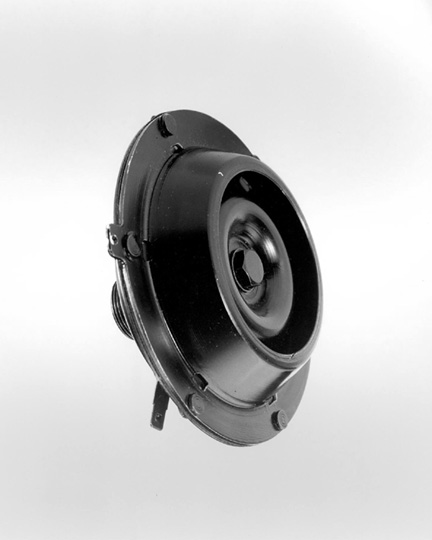
Proposed Electronic Horn that never went into
production. Gene Phillips photo.
|






